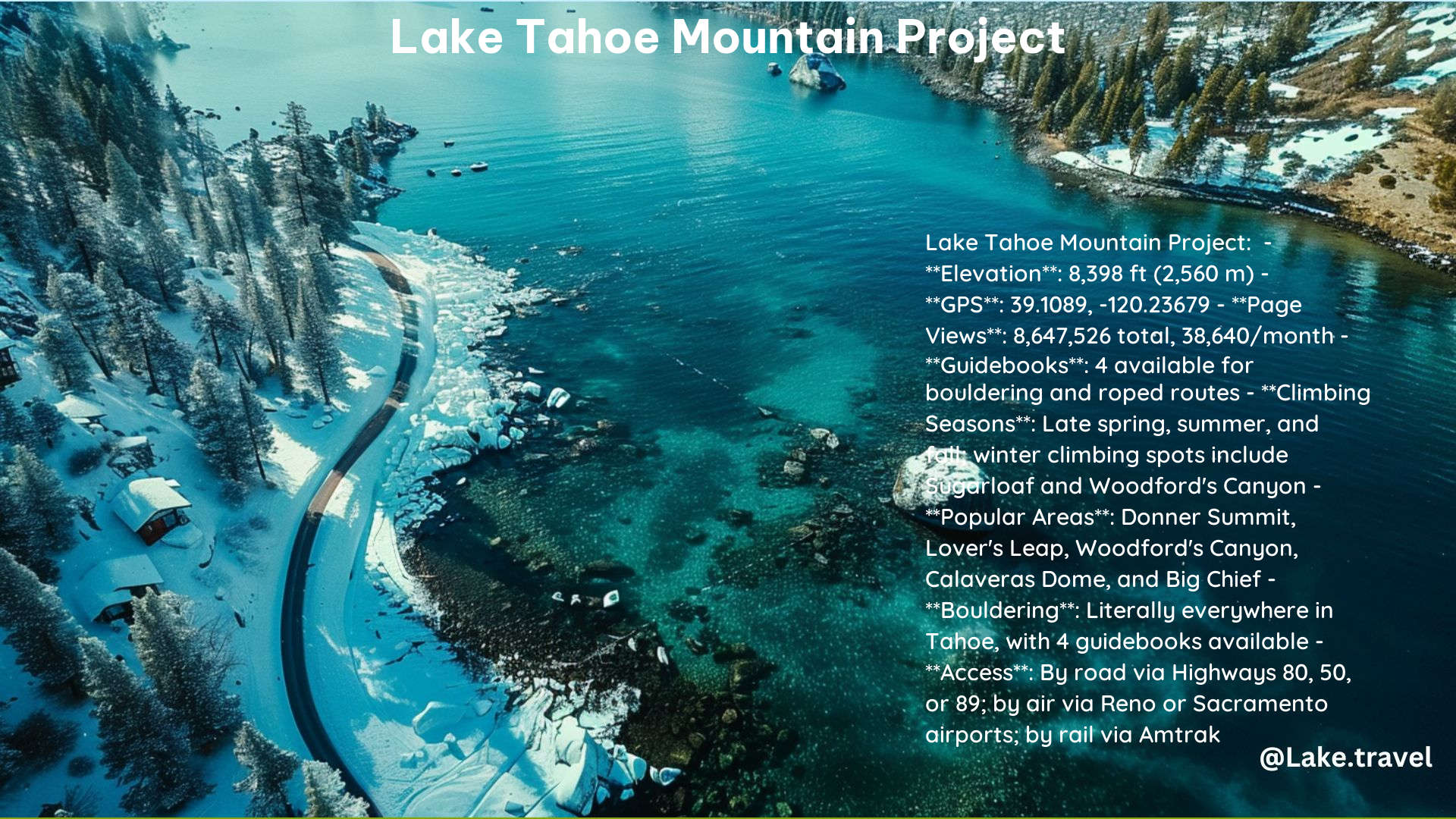The Lake Tahoe Mountain Project is a comprehensive online resource for climbers, hikers, and outdoor enthusiasts, providing detailed information on climbing routes, bouldering areas, and other outdoor activities in the stunning Lake Tahoe region. Whether you’re a seasoned adventurer or a newcomer to the area, this guide will help you navigate the best that Lake Tahoe has to offer.
Climbing Routes in Lake Tahoe
The Lake Tahoe region is renowned for its diverse and challenging climbing routes, catering to climbers of all skill levels. The Mountain Project has identified the most popular and highly rated climbing routes in the area, including:
Classic Climbing Routes
- Lover’s Leap: This iconic climbing destination offers a variety of multi-pitch routes, ranging from 5.6 to 5.12, with stunning views of the lake.
- Donner Summit: Known for its granite cliffs and technical climbing, Donner Summit features routes from 5.7 to 5.13.
- Woodford’s Canyon: This area boasts a mix of sport and trad climbing, with routes from 5.8 to 5.12.
Best Time to Climb
The prime climbing season in Lake Tahoe typically runs from June to September, when the weather is warm and dry. However, some areas like Sugarloaf and the south-facing side of Woodford’s are suitable for winter climbing as well.
Bouldering in Lake Tahoe

In addition to its renowned climbing routes, Lake Tahoe is also a popular destination for bouldering enthusiasts. The Mountain Project has identified several recommended bouldering areas in the region, including:
Recommended Bouldering Areas
- Rainbow Boulders: Known for easy-to-find boulders and roadside access, this area offers a range of problems from V4 to V9.
- PCT Boulders: Located in the South Tahoe guide, these boulders offer a good circuit of moderates (V3-V6) with zero approach and easy navigation.
- Christmas Valley / The Beavers: This area has nice circuits in the target grade range (V4-V9) and is suitable for early May.
Guidebooks
There are four guidebooks available for bouldering in Lake Tahoe, covering different regions: North Shore, West Shore, South Shore, and Outlying Areas. The South Tahoe guide is recommended for its comprehensive coverage of the area.
Getting to Lake Tahoe
Lake Tahoe can be accessed by road from the Bay Area or Reno, or by air through Reno’s airport. There are also rail options available, although they may not be as convenient.
Weather Averages
The Lake Tahoe region experiences a significant amount of snowfall, with the majority of crags being best suited for late spring, summer, and early fall climbing. The average temperatures range from around 30°F in the winter to 80°F in the summer.
Conclusion
The Lake Tahoe Mountain Project is an invaluable resource for outdoor enthusiasts looking to explore the climbing and bouldering opportunities in this stunning region. Whether you’re a seasoned climber or a beginner, the detailed information and recommendations provided on the Mountain Project can help you plan the perfect adventure in Lake Tahoe.
